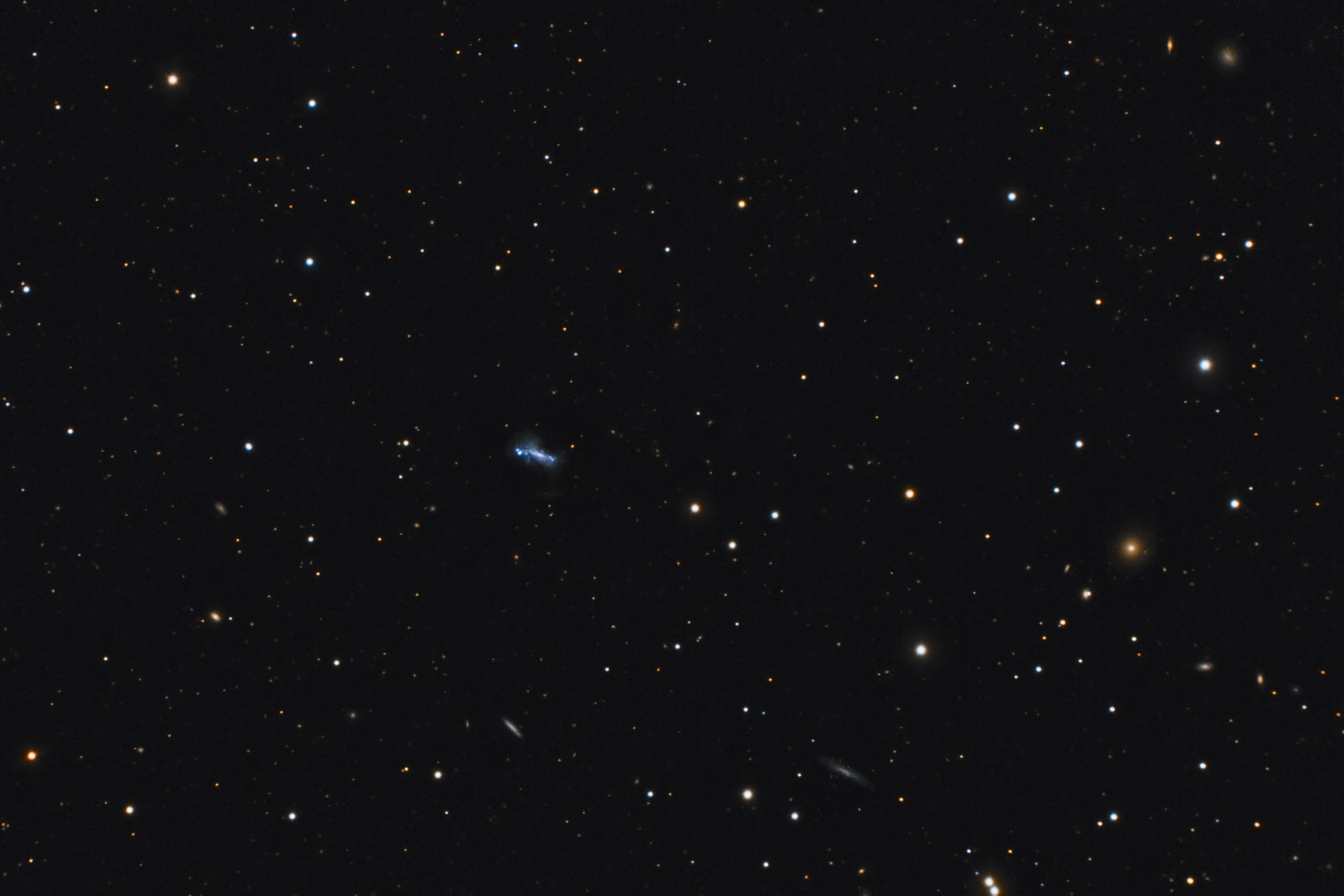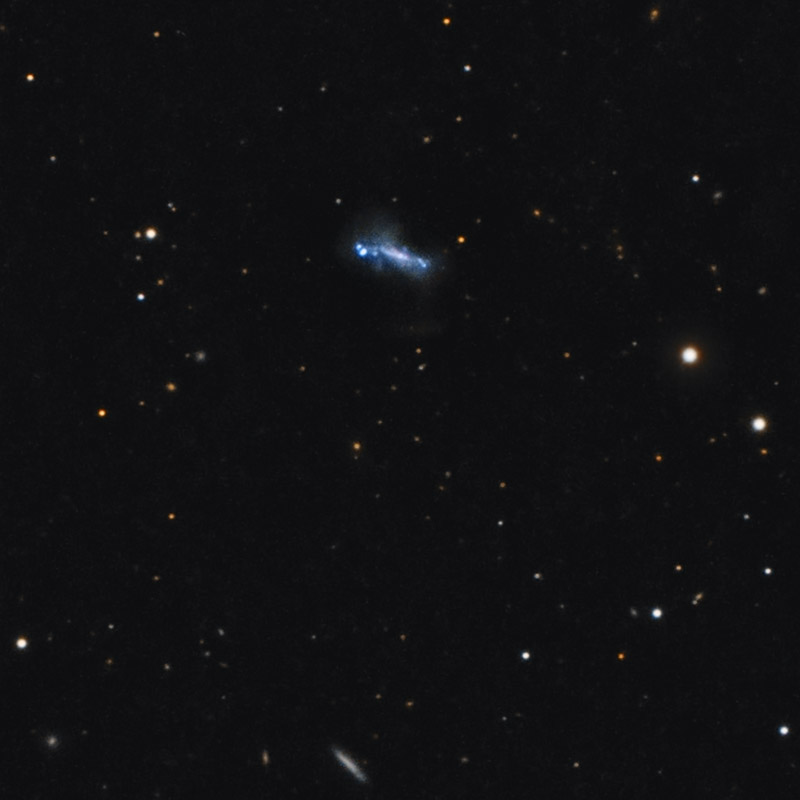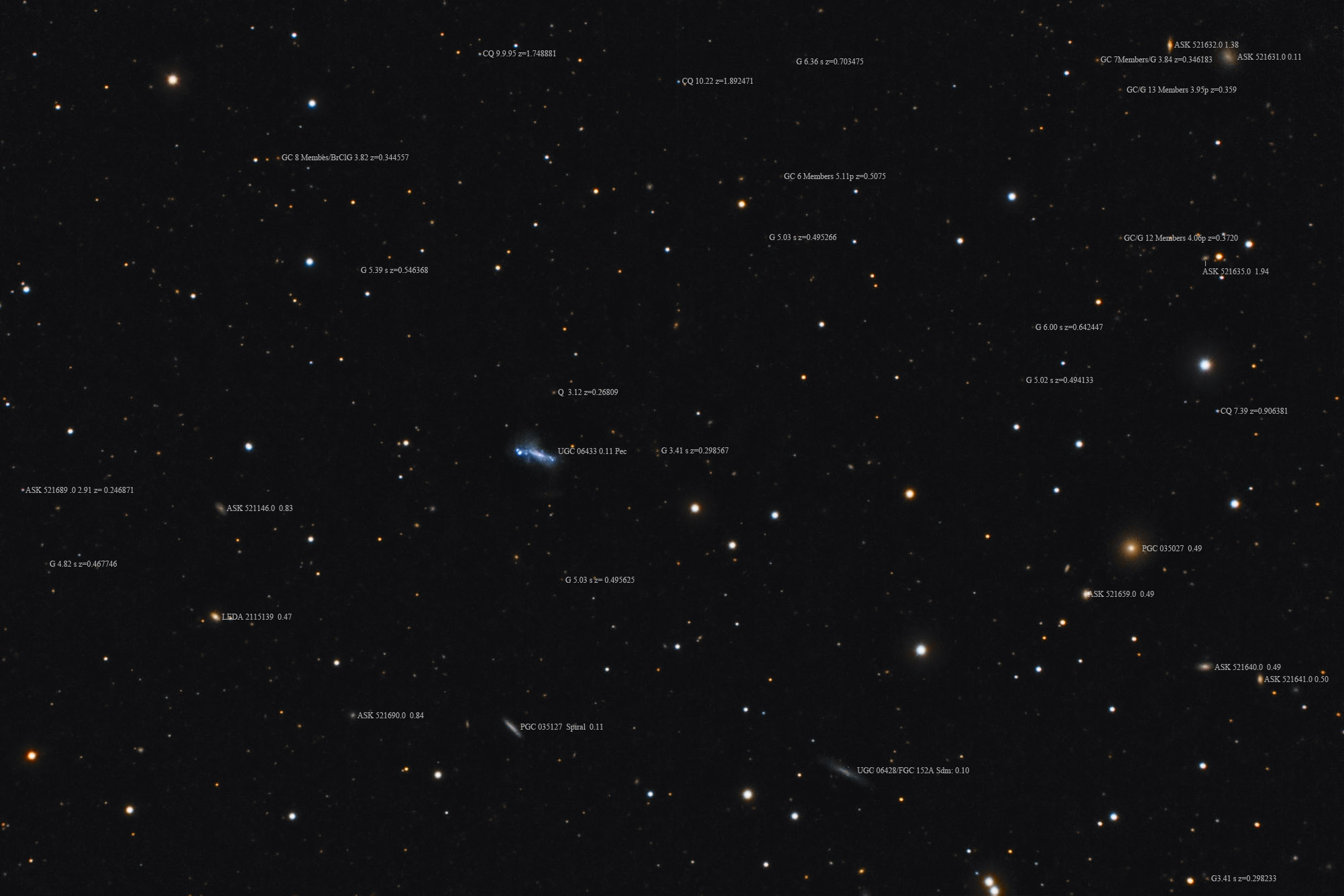| Description | Images |
Object name: UGC06433Designation(s): UGC06433, UGC 06433 is cataloged as a peculiar galaxy. While it resembles a typical irregular galaxy it has plumes not usually seen in irregular galaxies. Also, the starlike objects seen at each end of it are star clouds in the galaxy rather than stars in our galaxy. The entire galaxy, even its core is more blue than red. That would seem to indicate it has very recent new star formation that happened everywhere in the galaxy. I find nothing in my image area that could have caused this. PGC 035127 is at the same distance but seems too small and undisturbed. ASK 521631.0 and UGC 06428 have the same characteristics that rule them out as well. Looking beyond the field NGC 3652 at 100 million light-years comes leaping to the forefront of possibly interacting galaxies. It is a rather "Z" or "N" shaped galaxy also of a stronger than usual blue color. It's only 38 arc minutes from UGC 06433. If I'd planned better I could have mosaiced the two but I didn't frame them right as I wasn't thinking of the two being possibly connected. I find nothing in the literature connecting the two but NGC 3652 is the only possible interacting galaxy I could find. Of course, it could have merged with a small galaxy. I suppose it may not need a cause for the recent star formation but almost always it is due to some outside interaction. Related Designation(s):2MASS J11253185+3803379, 2MASX J11253182+3803378, 2MASXi J1125318+380337, 2MFGC 08933, ASK 521660.0, CGCG 1122.8+3819, CGCG 185-061, GALEXASC J112531.84+380339.4 , IRAS 11228+3820, IRAS F11228+3820, KUG 1122+383, LCSB L0451O, LGG 236:[G93] 007, MCG +06-25-066, NSA 091028, PGC 035124, SDSS J112531.81+380338.0, SDSS J112531.81+380338.1, UGC 06433, UGC06433, USGC U383 NED04, UVQS J112531.83+380338.3, UZC J112531.7+380339, VV 087, [RC2] A1122+38, |


